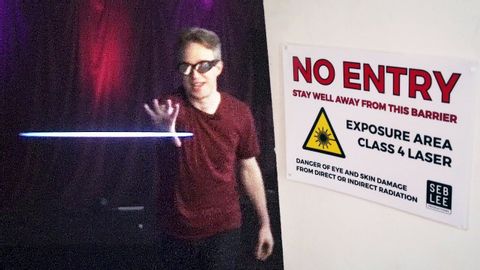レーザービームを空中で停止させる (Stopping A Laser Beam In Mid-Air)
林宜悉 が 2021 年 01 月 14 日 に投稿  この条件に一致する単語はありません
この条件に一致する単語はありませんUS /ɪnˈkrɛdəblɪ/
・
UK /ɪnˈkredəbli/
- adv.信じられないことに;信じられないほど;信じられないほど;驚くほど
US /ˈkɑnˌsɛpt/
・
UK /'kɒnsept/
- v.t.だます;笑わす
- n. (c./u.)トリック;腕の良いやり方;技
- adj.迷わせる
- v.t.破壊する;破産させる
- n. (c./u.)廃墟;崩壊;破滅
エネルギーを使用
すべての単語を解除
発音・解説・フィルター機能を解除

